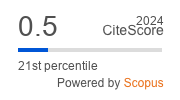NEUROSURGERY
Hemimegalencephaly (HME) is one of the extremely rare congenital malformations of cortical development (MCD). It belongs to the MCD group of mTOR-related pathologies and can be the result of various genetic disorders. One of the main clinical manifestations of HME is drug-resistant epilepsy requiring surgical treatment.
Case report. This article describes a clinical case of HME in a 4-year-old boy with frequent generalized tonic-clonic seizures and drug-resistant epilepsy; also, he had speech development delay. MRI revealed a HME of the right frontal lobe. Stereotaxic laser disconnection of the large cortical dysplasia in the right frontal lobe of the brain was performed. Morphological features of focal cortical dysplasia type IIb (FCD IIb) were reported. No seizures were observed in the hospital follow up after the operation for 14 days. The whole exome DNA sequencing showed the presence of a heterozygous state _000008.10^G 68419028del / 633del, pGlu212LysfsTers of the CPA6 gene.
Discussion. A feature of the case is the identified association of HME, morphologically represented by FCD IIb, with a previously unknown heterozygous state in the 6th exon of the CPA6 gene. This association allows to expand our understanding of changes in the activation of PI3K/AKT/mTOR pathway as a key link in the pathogenesis of congenital anomaly of cortical development.
Intraoperative ultrasound (IUS) is known to be an effective method for neuronavigation during surgical treatment of intractable seizures caused by focal cortical dysplasia (FCD). However, the 2-dimensional (2D) IUS has poor image quality and low spatial resolution. We describe via a case report how Ultrasound integrated Brainlab (BL) – Navigation software was used to optimize 2D IUS and thereby reduce these challenges.
Case report: We present a case report of a 22-year-old female patient with a long-standing history of seizures. The patient was treated with more than two anti-epileptic drugs without any clinical efficacy. In 2022 she was diagnosed with temporal lobe FCD. We performed a temporal lobe lesionectomy using optimized IUS BL-Navigation that provided enhanced 3-dimensional (3D) images.
Discussion: The extent of resection of the underlying FCD lesion is a key factor in determining whether a patient achieves meaningful seizure freedom after surgery. While the 2D IUS offers admirable characteristics that have been used as an aid during surgery, it is our view that IUS enhanced 3D BL-Navigation offers better appreciation of FCD lesions and therefore improves the extent of resection.
Aim. To study the age-related dynamics of structural and functional interactions of striatal neurons in the implementation of acts of motor behaviour in rats of both sexes.
Materials and methods. The study was carried out on 36 Wistar rats of both sexes aged 2, 7 and 16 months (n = 6 per group). In animals of all groups, locomotor activity was determined using a Laboras device (Metris, the Netherlands) for
15 minutes, after which the brain was sampled to determine the number and size of neurons in the striatum. The median and interquartile range of the index of motor activity and the number of neurons were determined, and to study the relationship between these indicators, a correlation and regression analysis was performed with the construction of linear and polynomial trends, and the coefficient of determination R2 was calculated.
Results. The size of neurons did not change significantly with age in the rats of both sexes. The number of neurons differed statistically in the rats of different sexes in all age groups. In male rats, the maximum number of neurons was noted at the age of 7 months with a decrease to 16 months. In female rats, the maximum number of neurons was recorded at the age of 2 months with a further decrease to 7 and 16 months. According to the regression analysis, a linear strong relationship (R2 =
0.80 for males, R2 = 0.79 for females) was established between the number of neurons in the striatum and motor activity in 2-month-old animals. At the age of 7 and 16 months the relationship is non-linear.
Conclusion. The number of neurons in the striatum is subject to sex and age dynamics, while their size remains unchanged from 2 to 16 months. For animals of both sexes, a decrease in the role of the striatum in providing motor activity in the process of growing up was noted. This relationship reaches its maximum in 2-month-old rats and then decreases.
RETRACTION
ISSN 2658-3348 (Online)









































